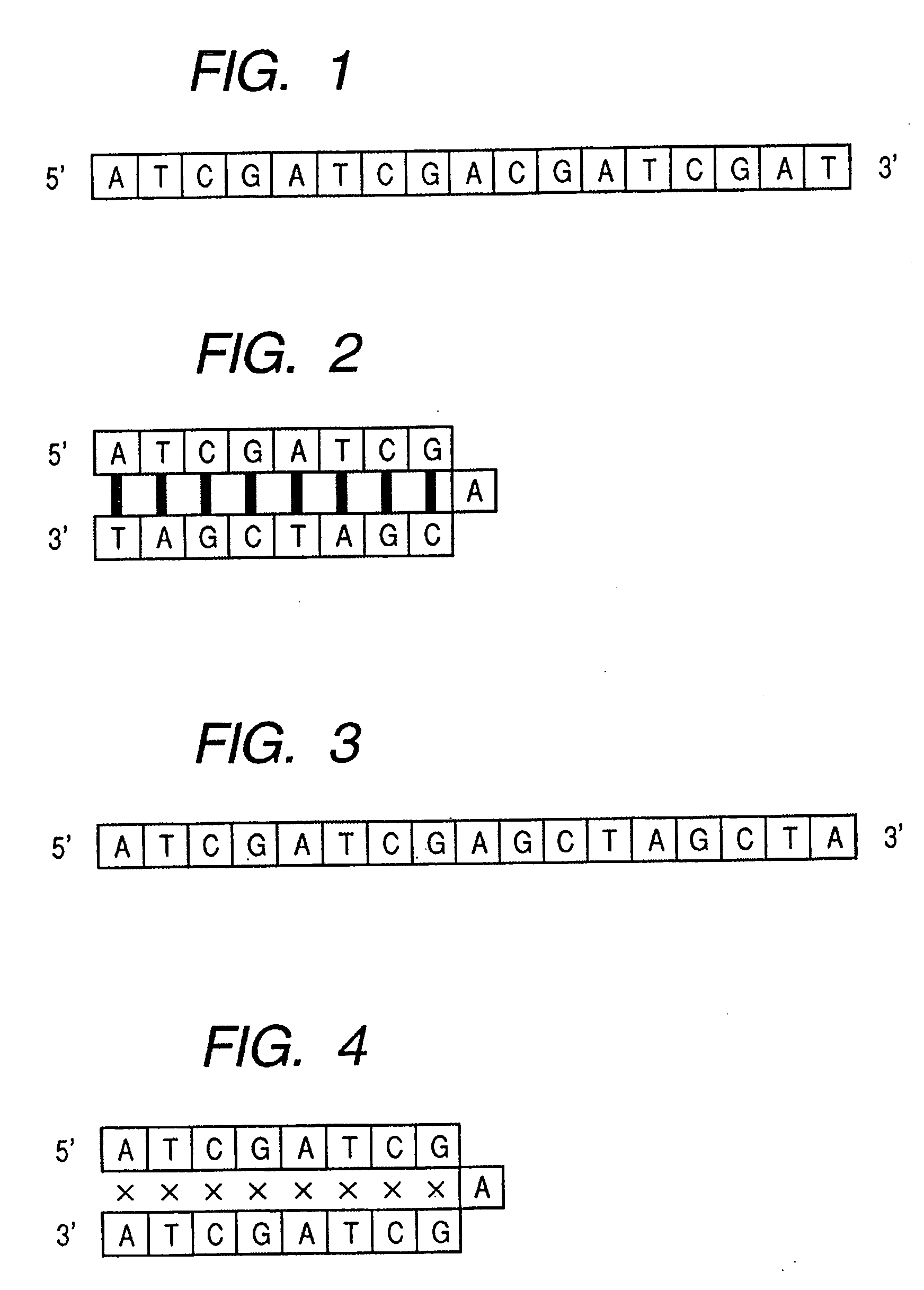Base sequence for control probe and method of designing the same
- Summary
- Abstract
- Description
- Claims
- Application Information
AI Technical Summary
Benefits of technology
Problems solved by technology
Method used
Image
Examples
examples
[0051] The present invention will be explained with reference to Examples below.
(Calculation of the Number of Frequency of Emergence and Analysis)
[0052]FIG. 5 shows a flowchart for computationally obtaining the number of frequency of emergence. Taking the case where a 4-base sequence occurs in the sequence of ATCGATCG, as an example, the explanation will be made.
[0053] In a first step, all possible combinations of a 4 base genomic sequence, XYZW (X to W each independently represent any one of A, T, C, G) are expressed by replacing A, T, C, G with numeric characters. The sequences of (0, 0, 0, 0) to (3, 3, 3, 3) are cleared back to zero (in this Example, A, T, C, G should be replaced with different numeric characters selected from the group of 0 to 3, respectively). Then, in the genomic sequence, ATCGATCG, which is used to caluculate the number of frequency of emergence, a particular numeric character selected from 0 to 4 is assigned to each base, therefore the sequence ATCGATCG ...
PUM
| Property | Measurement | Unit |
|---|---|---|
| Volume | aaaaa | aaaaa |
| Time | aaaaa | aaaaa |
| Length | aaaaa | aaaaa |
Abstract
Description
Claims
Application Information
 Login to view more
Login to view more - R&D Engineer
- R&D Manager
- IP Professional
- Industry Leading Data Capabilities
- Powerful AI technology
- Patent DNA Extraction
Browse by: Latest US Patents, China's latest patents, Technical Efficacy Thesaurus, Application Domain, Technology Topic.
© 2024 PatSnap. All rights reserved.Legal|Privacy policy|Modern Slavery Act Transparency Statement|Sitemap



